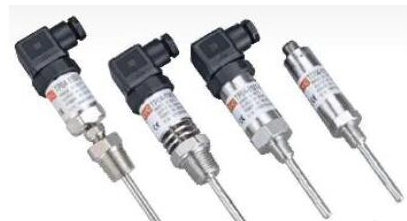How to solve the error caused by thermal inertia of the temperature sensor?
The structure of the temperature sensor is mostly known. The reason why the temperature sensor can measure temperature is mainly the thermal resistance or thermocouple inside. Sometimes we will hear that the temperature inertia of the temperature sensor causes the temperature sensor error. What is the thermal inertia of the temperature sensor? ? What can be done to solve the errors caused by thermal inertia?

The thermal inertia of the temperature sensor is actually the thermal inertia of the thermal resistance or thermocouple in the temperature sensor. Due to the thermal inertia of the thermal resistance or thermocouple, the indicated value of the meter lags behind the change of the measured temperature. This effect is particularly significant when performing fast measurements protruding. Therefore, thermal resistors or thermocouples with thinner thermal electrodes and smaller protective tube diameters should be used whenever possible. When the temperature measurement environment permits, you can even remove the protective tube.
Due to the measurement hysteresis, the amplitude of the temperature fluctuation detected by the thermal resistance or thermocouple is smaller than the amplitude of the furnace temperature fluctuation. The larger the measurement lag, the smaller the amplitude of the thermal resistance or thermocouple fluctuations, and the larger the difference from the actual furnace temperature. When using a thermocouple with a large time constant to measure or control the temperature, although the temperature displayed by the meter has small fluctuations, the actual furnace temperature fluctuations may be large. In order to accurately measure the temperature, a thermal resistance or thermocouple with a small time constant should be selected. The time constant is inversely proportional to the heat transfer coefficient, and is proportional to the diameter of the hot end of the thermal resistance or thermocouple, the density of the material, and the specific heat. To reduce the time constant, in addition to increasing the heat transfer coefficient, the most effective way is to minimize it. The size of the hot end.
In use, usually a material with good thermal conductivity, a thin tube wall and a small inner diameter protective sleeve. In a more precise temperature measurement, a bare wire thermal resistance or thermocouple without a protective sleeve is used, but the thermocouple is easily damaged and should be corrected and replaced in time.
The error caused by the thermal inertia of the temperature sensor has a great impact on the measured value during the measurement, especially in the precision measurement, we must pay attention to the thermal inertia of the sensor. We must try to avoid the error caused by the thermal inertia or take appropriate compensation to weaken it.
If you want to know more, our website has product specifications for the temperature sensor, you can go to ALLICDATA ELECTRONICS LIMITED to get more information

